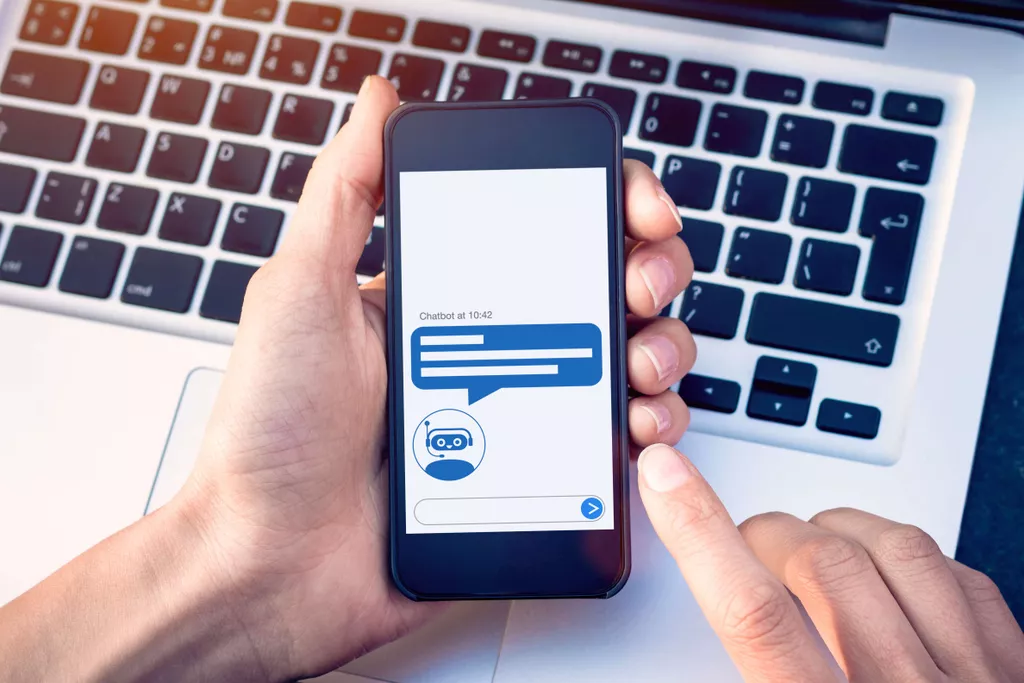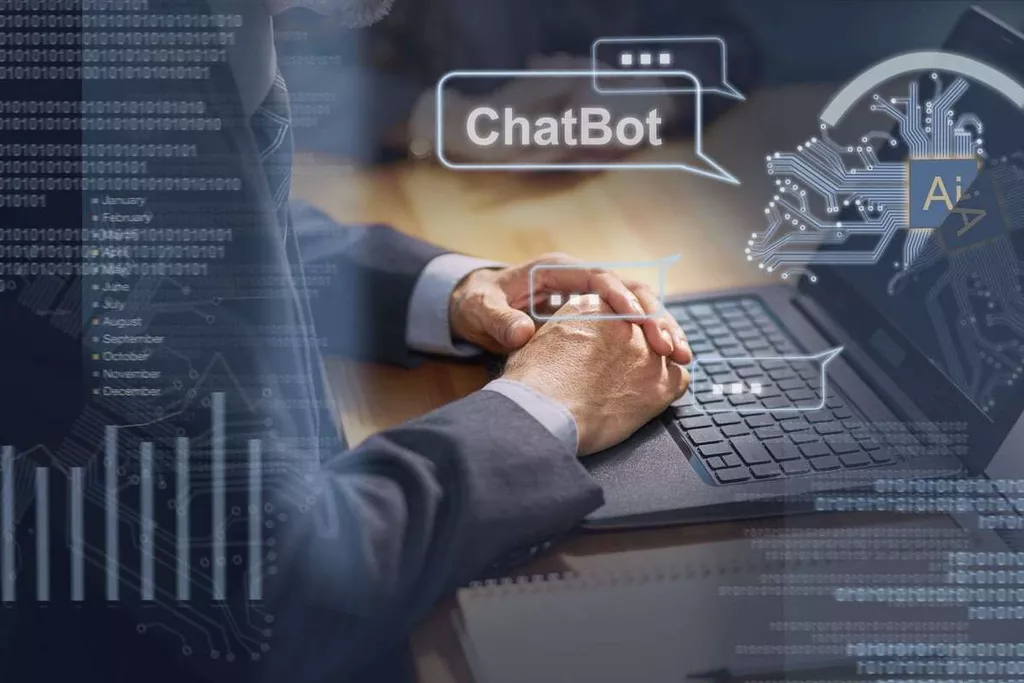AI Chatbots in Healthcare Examples + Development Guide

HR chatbots offer a wide range of applications to streamline human resources processes and enhance employee experiences. These use cases for chatbots include assisting with benefits enrollment, answering frequently asked questions, guiding employees through onboarding, and conducting exit interviews. With individualized support and quick access to critical HR information, these chatbots leverage AI and natural language processing (NLP) to automate routine tasks, improve HR efficiency, and foster stronger employee engagement. Now, we will explore the valuable chatbot use cases in optimizing HR operations and delivering a seamless employee experience. No included studies reported direct observation (in the laboratory or in situ; eg, ethnography) or in-depth interviews as evaluation methods. One of the use cases of chatbots for customer service is offering self-service and answering frequently asked questions.

Avoiding responsibility becomes easier when numerous individuals are involved at multiple stages, from development to clinical applications [107]. Although the law has been lagging and litigation is still a gray area, determining legal liability becomes increasingly pressing as chatbots become more accessible in health care. Chatbots have the potential to address many of the current concerns regarding cancer care mentioned above. This includes chatbot healthcare use cases the triple aim of health care that encompasses improving the experience of care, improving the health of populations, and reducing per capita costs [21]. Chatbots can improve the quality or experience of care by providing efficient, equitable, and personalized medical services. We can think of them as intermediaries between physicians for facilitating the history taking of sensitive and intimate information before consultations.
Government Chatbot Use Cases
Through chatbots (and their technical functions), we can have only a very limited view of medical knowledge. The ‘rigid’ and formal systems of chatbots, even with the ML bend, are locked in certain a priori models of calculation. Expertise generally requires the intersubjective circulation of knowledge, that is, a pool of dynamic knowledge and intersubjective criticism of data, knowledge and processes (e.g. Prior 2003; Collins and Evans 2007).
Your business can reach a wider audience, segment your visitors, and persuade consumers to shop with you through suggested products and sales advertisements. Chatbots can also track interests to provide proper notification based on the individual. Chatbots can use text, as well as images, videos, and GIFs for a more interactive customer experience and turn the onboarding into a conversation instead of a dry guide. So, you can save some time for your customer success manager and delight clients by introducing bots that help shoppers get to know your system straight from your website or app. Then you’ll be interested in the fact that chatbots can help you reduce cart abandonment, delight your shoppers with product recommendations, and generate more leads for your marketing campaigns.
Scheduling appointments with ease
Recent reviews have focused on the use of chatbots during the COVID-19 pandemic and the use of conversational agents in health care more generally. This paper complements this research and addresses a gap in the literature by assessing the breadth and scope of research evidence for the use of chatbots across the domain of public health. We acknowledge the difficulty in identifying the nature of systemic change and looking at its complex network-like structure in the functioning of health organisations.
AI-powered chatbots in healthcare are able to provide an initial symptom assessment when provided with answers to relevant questions. This simply streamlines the process of patient care by moving things along and directing patients to the relevant specialists in a quicker way. Healthcare professionals can now efficiently manage resources and prioritize clinical cases using artificial intelligence chatbots. The technology helps clinicians categorize patients depending on how severe their conditions are. A medical bot assesses users through questions to define patients who require urgent treatment. It then guides those with the most severe symptoms to seek responsible doctors or medical specialists.
In order to improve customer service, the process required some user clarification to better understand the refund scenario. Master of Code offered a team to expand the primary bot solution, providing end-to-end build and support for the service. By implementing the Conversational AI solution for handling refunds, the organization witnessed a significant reduction in the number of refunds provided, ranging from 13% to 28%, depending on the channel and time frame. This improvement was attributed to the consistent and clear application of the rules governing refunds.
How AI chatbots are transforming the world? – DataScienceCentral.com – Data Science Central
How AI chatbots are transforming the world? – DataScienceCentral.com.
Posted: Tue, 31 Oct 2023 07:00:00 GMT [source]
In 2023, businesses may need to embrace not only text chatbots but also voice assistants due to their increasing popularity. Projections indicate that the number of voice chatbots is expected to exceed 8 billion by 2023. Based on TIDIO’s projections, the use of chatbots is expected to drive substantial growth in the chatbot market during 2023, with an estimated increase of over $994 million, indicating an annual gain of approximately $200 million.
Healthcare chatbots can help medical professionals to better communicate with their patients. Babylon Health is an app company partnered with the UK’s NHS that provides a quick symptom checker, allowing users to get information about treatment and services available to them at any time. Chatbots can be used to automate healthcare processes and smooth out workflow, reducing manual labor and freeing up time for medical staff to focus on more complex tasks and procedures.
- Through patient preferences, the hospital staff can engage their patients with empathy and build a rapport that will help in the long run.
- Finally, there is a need to understand and anticipate the ways in which these technologies might go wrong and ensure that adequate safeguarding frameworks are in place to protect and give voice to the users of these technologies.
- Furthermore, accessibility via both smartphones and personal computers makes such chatbots widely available.
- At the onset of the pandemic little was known about Covid-19 and information and guidelines were in constant flux.
While the app is overall highly popular, the symptom checker is only a small part of their focus, leaving room for some concern. We’ll tell you about the top chatbots in medicine today, along with their pros and cons. As a bonus, we’ll also cover the ambiguous future of AI-powered medical chatbots. If you think of a custom chatbot solution, you need one that is easy to use and understand. This can be anything from nearby facilities or pharmacies for prescription refills to their business hours. Let’s check how an AI-driven chatbot in the healthcare industry works by exploring its architecture in more detail.
services
However, the majority of these AI solutions (focusing on operational performance and clinical outcomes) are still in their infancy. Chatbots were also used for scheduling vaccine appointments (1 case).35 The chatbot searches for appointment availability across various locations and automates the appointment scheduling process. This enables more efficient utilization of available vaccines, reduces wait times in vaccine centers, and allows users to easily find available appointments. Our data collection was supplemented by accessing these chatbots to gather more information about their design and use.
Patients are often overwhelmed by information in the discharge process, and a chatbot provides them with an avenue of communication that they can use to ask questions about upcoming procedures, recovery exercises, or medication. Patients can also quickly refer to their electronic medical records, securely stored in the app. The app also helps assess their general health with its quick health checker and book medical appointments. They can even attend these appointments via video call within two hours of booking.
An area of concern is that chatbots are not covered under the Health Insurance Portability and Accountability Act; therefore, users’ data may be unknowingly sold, traded, and marketed by companies [110]. On the other hand, overregulation may diminish the value of chatbots and decrease the freedom for innovators. Consequently, balancing these opposing aspects is essential to promote benefits and reduce harm to the health care system and society. AI and ML have advanced at an impressive rate and have revealed the potential of chatbots in health care and clinical settings.
This support is especially important in remote areas or for patients who have difficulty accessing traditional healthcare services, making healthcare more inclusive and accessible. But, front-facing innovations like chatbot technology have the power to solve long-existing issues in the healthcare sector by increasing access to medical services and facilitating useful dialogue between patient and provider. A healthcare chatbot can also be used to quickly triage users who require urgent care by helping patients identify the severity of their symptoms and providing advice on when to seek professional help.

Healthy diets and weight control are key to successful disease management, as obesity is a significant risk factor for chronic conditions. Chatbots have been incorporated into health coaching systems to address health behavior modifications. For example, CoachAI and Smart Wireless Interactive Health System used chatbot technology to track patients’ progress, provide insight to physicians, and suggest suitable activities [45,46].
Generative AI Examples – eWeek
Generative AI Examples.
Posted: Mon, 24 Apr 2023 07:00:00 GMT [source]
Healthily is an AI-enabled health-tech platform that offers patients personalized health information through a chatbot. From generic tips to research-backed cures, Healthily gives patients control over improving their health while sitting at home. To discover how Yellow.ai can revolutionize your healthcare services with a bespoke chatbot, book a demo today and take the first step towards an AI-powered healthcare future. Let’s explore a few different uses of ChatGPT in the healthcare sector and discuss the benefits that this revolutionary technology offers to patients, doctors, and researchers. Chatbots in healthcare can also be used to provide consumers with basic diagnostic assistance and as a tool to assess symptoms before an in-person appointment. It assesses the current emotional state of the user by asking questions, then suggests activities and exercises for them to do.
- Medical chatbots might pose concerns about the privacy and security of sensitive patient data.
- For example, when a chatbot suggests a suitable recommendation, it makes patients feel genuinely cared for.
- We were unable to assess some chatbots on some attributes because of variations in available information.
Further research and interdisciplinary collaboration could advance this technology to dramatically improve the quality of care for patients, rebalance the workload for clinicians, and revolutionize the practice of medicine. Only 3 chatbots were designed to initiate follow-up (Japan’s Prefecture Line chatbots (e.g., COOPERA) and CareCall), or recurring conversation (Alexa—My day for seniors skill) (Cases 34, 51, and 29). Another, at the University of California San Francisco (Case 12), sends an email or text to employees to remind them to use the chatbot to get an entry pass (e.g., prior to their shift) that clears them to report to work.
Many health professionals and experts have emphasised that chatbots are not sufficiently mature to be able to technically diagnose patient conditions or replace health professional assessments (Palanica et al. 2019). Although some applications can provide assistance in terms of real-time information on prognosis and treatment effectiveness in some areas of health care, health experts have been concerned about patient safety (McGreevey et al. 2020). A pandemic can accelerate the digitalisation of health care, but not all consequences are necessarily predictable or positive from the perspectives of patients and professionals. Chatbots’ robustness of integrating and learning from large clinical data sets, along with its ability to seamlessly communicate with users, contributes to its widespread integration in various health care components.